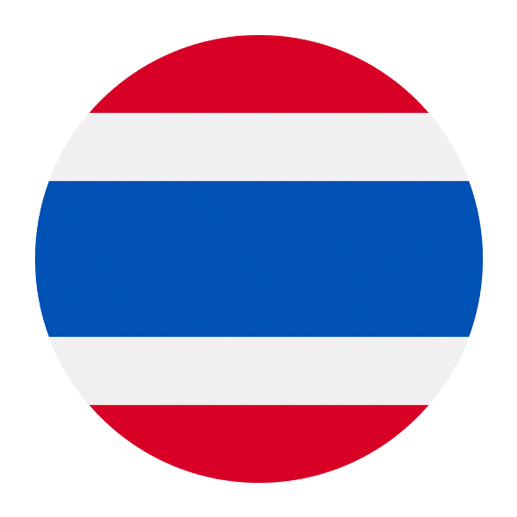Thailand, often referred to as the “Land of Smiles,” is renowned for its rich culture, lush landscapes, and warm hospitality. One of the most fascinating aspects of this Southeast Asian country is its language. The Thai language, with its unique script, tones, and vocabulary, offers a window into the heart of Thai society. Understanding Thai not only aids in communication but also provides insight into the customs, values, and mindset of the Thai people.
Historical Context of the Thai Language
To fully appreciate how the Thai language reflects Thai society, it’s essential to understand its historical evolution. Thai, or “ภาษาไทย” (phasa Thai), belongs to the Tai-Kadai language family. The language has been influenced by Pali, Sanskrit, Khmer, and more recently, English. These influences are evident in its vocabulary, particularly in areas related to religion, administration, and modern technology.
Religious Influence
Theravada Buddhism, the predominant religion in Thailand, has significantly shaped the Thai language. Many Thai words related to religion, philosophy, and morality are derived from Pali and Sanskrit. For example, the Thai word for temple is “วัด” (wat), which is derived from the Sanskrit word “वट” (vaṭa). Similarly, “พระ” (phra), meaning monk, has its roots in Pali.
The integration of these religious terms into everyday language highlights the deep-seated influence of Buddhism on Thai society. It is not uncommon for Thais to incorporate Buddhist principles into their daily lives, and this is reflected in their speech and conduct.
Social Hierarchies and Politeness
One of the most distinctive features of the Thai language is its elaborate system of politeness and social hierarchy. Thai society places a high value on respect and deference, particularly towards elders and those in positions of authority. This cultural norm is embedded in the language through the use of polite particles, honorifics, and varying levels of formality.
Polite Particles
Thai speakers often use polite particles at the end of sentences to show respect and politeness. The most common particles are “ครับ” (khrap) for males and “ค่ะ” (kha) for females. For example, a man might say “สวัสดีครับ” (sawasdee khrap) to greet someone politely, while a woman would say “สวัสดีค่ะ” (sawasdee kha).
Honorifics and Titles
Honorifics and titles are also crucial in Thai communication. Thais frequently use titles such as “คุณ” (khun) before a person’s name to show respect. For instance, “คุณสมชาย” (Khun Somchai) would be a respectful way to address someone named Somchai. There are also specific titles for different social roles and ranks, such as “อาจารย์” (ajarn) for teachers and “นาย” (nai) for men.
Levels of Formality
The Thai language has various levels of formality that are employed depending on the social context. For example, there are different words for “I” and “you” that vary in formality. “ฉัน” (chan) and “คุณ” (khun) are commonly used in everyday conversation, while “ผม” (phom) for men and “ดิฉัน” (dichan) for women are more formal. In contrast, “กู” (ku) and “มึง” (mueng) are informal and can be considered rude if used inappropriately.
The Concept of “Kreng Jai”
A unique cultural concept that deeply influences Thai behavior and language is “เกรงใจ” (kreng jai). Kreng jai is difficult to translate directly into English, but it encompasses feelings of consideration, deference, and an aversion to causing inconvenience to others. This concept is deeply ingrained in Thai society and is often reflected in their indirect communication style.
Indirect Communication
Thais tend to avoid direct confrontation and prefer to communicate in a way that preserves harmony and saves face. This can be observed in the use of softening phrases and indirect expressions. For example, instead of saying “No” outright, a Thai person might say “ไม่ค่อยสะดวก” (mai koi sadhuak), meaning “not very convenient,” to decline an invitation politely.
Non-Verbal Communication
Non-verbal cues are also an essential part of communication in Thailand. The traditional Thai greeting, the “ไหว้” (wai), is a gesture of respect that involves pressing the palms together in a prayer-like fashion and bowing slightly. The height at which the hands are held and the depth of the bow can vary depending on the social status of the person being greeted.
Linguistic Reflection of Thai Values
The Thai language encapsulates several core values of Thai society, including respect, humility, and a strong sense of community. These values are not only evident in how Thais communicate but also in the proverbs and idiomatic expressions commonly used in the language.
Proverbs and Idiomatic Expressions
Thai proverbs and idiomatic expressions often reflect societal values and wisdom passed down through generations. For example, the saying “น้ำพึ่งเรือ เสือพึ่งป่า” (nam phueng ruea, suea phueng pa), which translates to “Water depends on the boat, the tiger depends on the forest,” emphasizes mutual dependence and cooperation.
Another common expression is “เข้าเมืองตาหลิ่ว ต้องหลิ่วตาตาม” (khao mueang ta liew, tong liew ta tam), meaning “When in a village with squinting eyes, you must squint your eyes too.” This proverb highlights the importance of adapting to local customs and norms, a value deeply ingrained in Thai society.
Language and Modernization
As Thailand continues to modernize and integrate into the global economy, the Thai language has also evolved to accommodate new concepts and technologies. English, in particular, has had a significant impact on the Thai lexicon, especially in business, technology, and education.
Code-Switching and Loanwords
Code-switching, or the practice of alternating between languages within a conversation, is common among Thais, particularly younger generations. English loanwords are frequently used in Thai, especially in contexts related to technology and popular culture. For example, the word “คอมพิวเตอร์” (khomphiwat), meaning computer, is derived from the English word “computer.”
Language Preservation Efforts
Despite the influx of foreign words, there are ongoing efforts to preserve the Thai language and its cultural heritage. The Thai government and various cultural organizations actively promote the use of Thai in media, education, and official communication. Initiatives such as National Thai Language Day, celebrated on July 29th, aim to raise awareness about the importance of preserving the Thai language.
Conclusion
The Thai language is a rich tapestry that reflects the complexities and nuances of Thai society. From its historical roots and religious influences to its intricate system of politeness and the concept of kreng jai, Thai offers invaluable insights into the values and social norms of the Thai people. As Thailand continues to evolve, so too will its language, continually adapting to new influences while preserving its unique cultural identity.
For language learners, delving into Thai is more than just mastering a new way of communication; it is an exploration of a culture deeply rooted in respect, community, and harmony. Whether you are a casual traveler or a dedicated language enthusiast, understanding Thai can profoundly enrich your experience of Thailand and its people.

